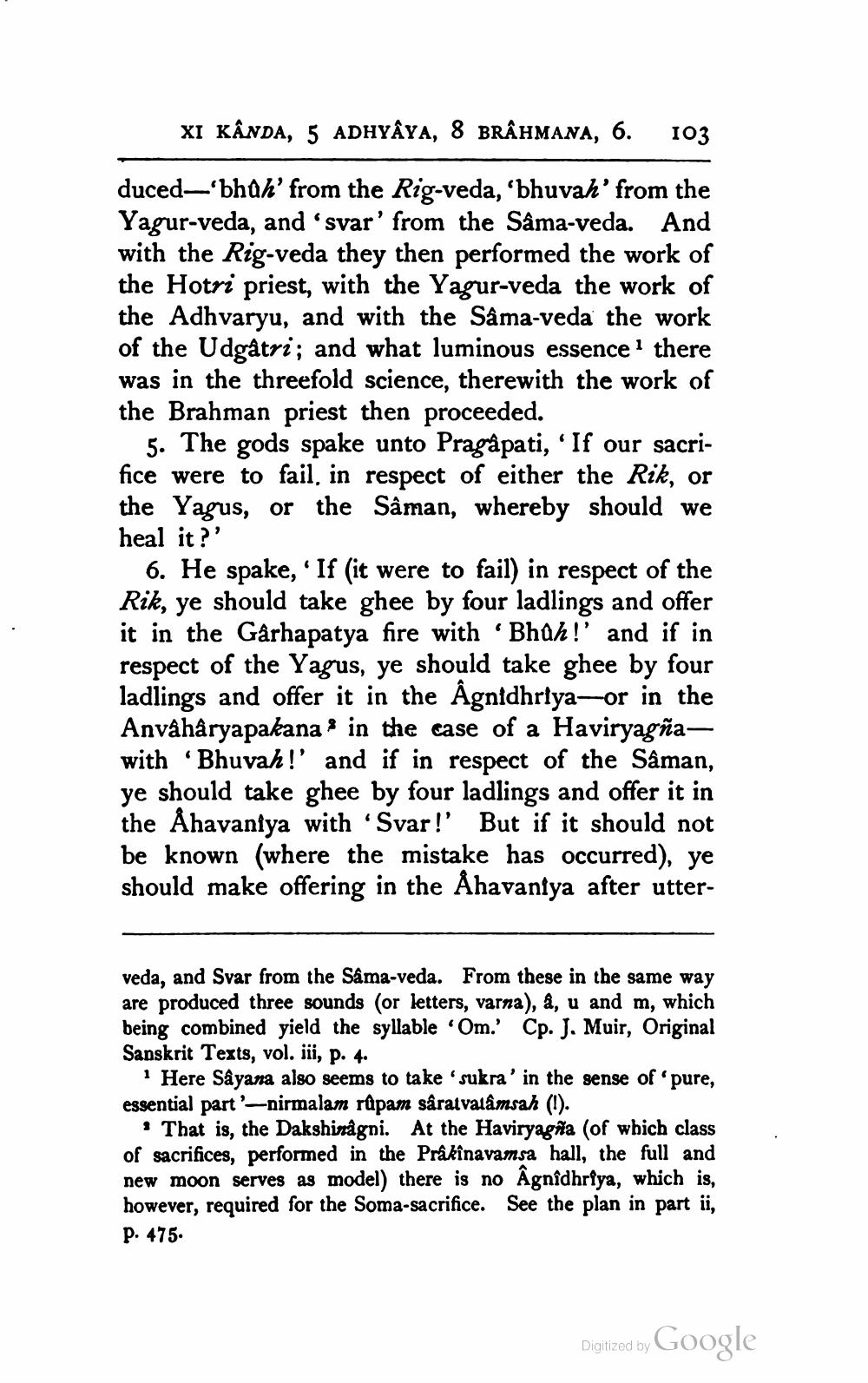________________
XI KANDA, 5 ADHYAYA, 8 BRÂhmana, 6. 103
duced-'bhu' from the Rig-veda, 'bhuvah' from the Yagur-veda, and 'svar' from the Sâma-veda. And with the Rig-veda they then performed the work of the Hotri priest, with the Yagur-veda the work of the Adhvaryu, and with the Sâma-veda the work of the Udgâtri; and what luminous essence1 there was in the threefold science, therewith the work of the Brahman priest then proceeded.
5. The gods spake unto Pragâpati, 'If our sacrifice were to fail, in respect of either the Rik, or the Yagus, or the Sâman, whereby should we heal it?'
6. He spake, 'If (it were to fail) in respect of the Rik, ye should take ghee by four ladlings and offer it in the Gârhapatya fire with 'Bhûh!' and if in respect of the Yagus, ye should take ghee by four ladlings and offer it in the Âgnidhrtya-or in the Anvâhâryapakana in the case of a Haviryagñawith 'Bhuvah!' and if in respect of the Sâman, ye should take ghee by four ladlings and offer it in the Ahavaniya with 'Svar!' But if it should not be known (where the mistake has occurred), ye should make offering in the Åhavaniya after utter
veda, and Svar from the Sâma-veda. From these in the same way are produced three sounds (or letters, varna), â, u and m, which being combined yield the syllable 'Om.' Cp. J. Muir, Original Sanskrit Texts, vol. iii, p. 4.
1 Here Sâyana also seems to take 'sukra' in the sense of 'pure, essential part'-nirmalam rûpam sâratvalâmsah (1).
• That is, the Dakshinâgni. At the Haviryaga (of which class of sacrifices, performed in the Prâkînavamsa hall, the full and new moon serves as model) there is no Âgnîdhrfya, which is, however, required for the Soma-sacrifice. See the plan in part ii, P. 475.
Digitized by
Google




